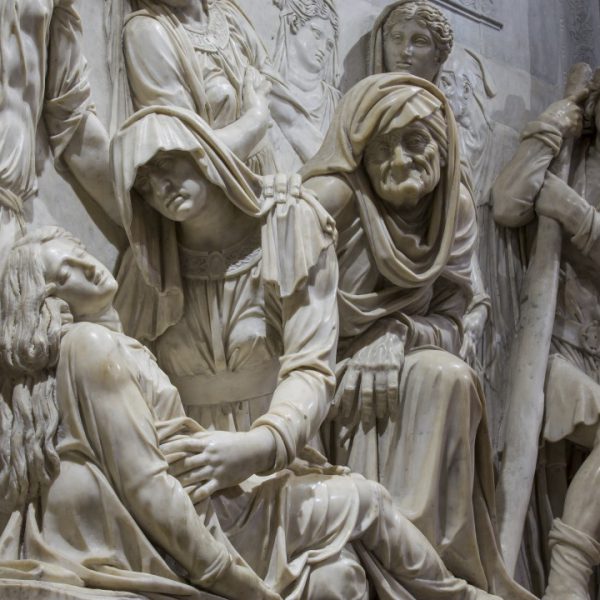When Saint Anthony died, on June 13th, 1231, the cult of the Saint and the pilgrimages to his tomb started spreading wide. By the beginning of the 14th century the church was completed, but modifications, maintenance, arrangement of furnishings, embellishments, construction of tombs and monuments inside the building and in the cloisters continued for centuries after. The conspicuous flow of money conflicted with the Franciscan rule of poverty and, moreover, a very strong bond emerged between the community of the city and the complex of the Saint. These two factors led the city authorities to enter the management and administration of the assets that were accumulating in the church. The construction itself was in part supported by the community, thus becoming an authentic expression of the city of Padua. Up until the end of the 14th century, the city statutes defined the tasks of a commission, made up of laypeople, which had to manage and pay for the various interventions on the church and convent of the Saint. An institutionalized form of this commission, which took the name of Veneranda Arca di S. Antonio and was regulated by its own statutes, dates back to 1396. Since then, uninterruptedly, some citizens of Padua (four, at first; five, today), eminent for rectitude and ability, assisted by two religious (today by the rector of the basilica and by a lay member appointed by the Holy See), have carried out the management of movable properties referring to the Sacristy and the Library, and of buildings and donations made to the Ark of the Saint. In the 15th century, when Padua fell under Venetian domination, the “massari” (as the Presidents were then known; the term “President” replaced that of “”massaro”” during the 16th century), were chosen above all from the Paduan management group, formed by representatives of the academic world, noble families, members of the mercantile and financial bourgeoisie. However, it was the podestà (always Venetian) who designated the massari of the Ark. The city council, on the other hand, could take decisions regarding the institution, even if, as the power of the government of the Serenissima increased, and especially in certain matters, the power of the religious component grew to the detriment of the secular one. The increase in the patrimony also determined an increasing need for organization, so each president of the Ark was entrusted, as it is today, with a specific area of competence. The fall of the Republic of Venice (1797) and the advent of the revolutionary regimes did not affect the Veneranda Arca, which was correctly considered a secular institution by Napoleonic legislation. Therefore, not only did the institution survive and continue its function, but it assumed responsibility for the management of the administrative functions of government of the basilica, previously belonging to the Franciscan Order. Furthermore, with this recognition, it was possible for the Ark to save precious treasures from confiscation, such as the complex of reliquaries of the basilica and the Antonian Library. The institutional debate on the role of the Ark during the 19th and 20th centuries is characterized by various interventions, aimed at defining with precision the juridical physiognomy of the entity and its competencies, as conditioned by the relations between Church and State. In 2000 a special commission of the Council of State decreed that the vestry boards, to which the Ark is assimilated, must be considered private entities of public importance.








